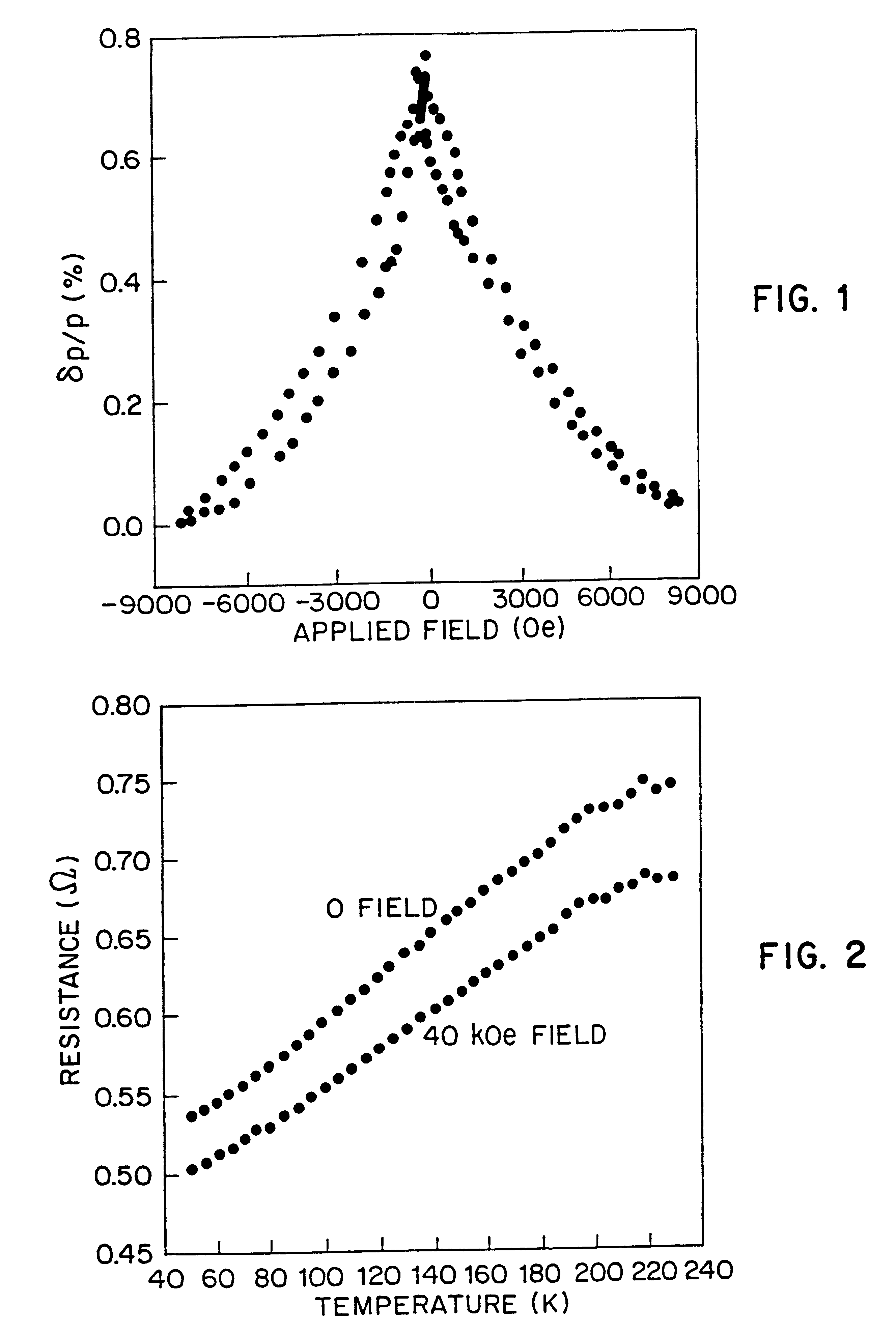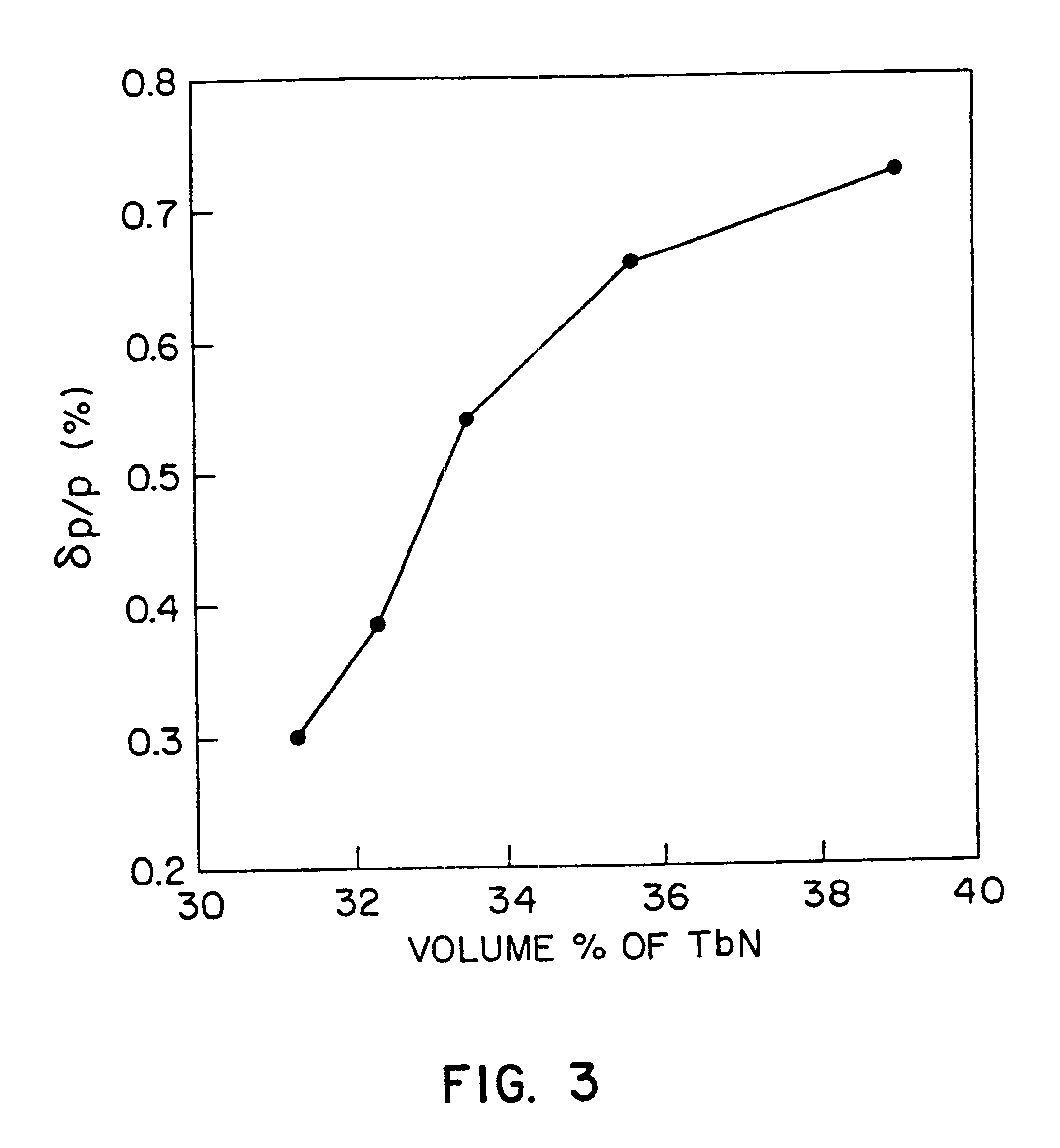Magnetoresistive material with two metallic magnetic phases
- Summary
- Abstract
- Description
- Claims
- Application Information
AI Technical Summary
Problems solved by technology
Method used
Image
Examples
Embodiment Construction
Amorphous Tb.sub.x Co.sub.1-x thin films with the compositions of 25.about.32 atomic % of Tb were prepared using facing target magnetron sputtering with a composite target. The parameter "x" is the atomic fraction of Tb, ranging from 0.25 to 0.32. The film compositions were controlled by changing the Ar sputtering gas pressure (5.about.15 mTorr). In order to induce the phase separation of Co and TbN, nitrogen was introduced into amorphous TbCo thin films by annealing at 650.degree. C. for 12 hours with a continuous flow of 10% H.sub.2 -balance N.sub.2 gas mixture. (Annealing at a lower temperature, such as 400.degree. C., would be possible with a longer dwell time). The pressure of the gas mixture in the annealing furnace was about 1 atmosphere and the gas was flowed at a rate of approximately 500 standard cc / minute. The pressure and flow rate of the gas are not critical control parameters. Phase analysis was made with x-ray diffraction (See FIG. 11) and with secondary electron imag...
PUM
 Login to View More
Login to View More Abstract
Description
Claims
Application Information
 Login to View More
Login to View More - R&D
- Intellectual Property
- Life Sciences
- Materials
- Tech Scout
- Unparalleled Data Quality
- Higher Quality Content
- 60% Fewer Hallucinations
Browse by: Latest US Patents, China's latest patents, Technical Efficacy Thesaurus, Application Domain, Technology Topic, Popular Technical Reports.
© 2025 PatSnap. All rights reserved.Legal|Privacy policy|Modern Slavery Act Transparency Statement|Sitemap|About US| Contact US: help@patsnap.com



